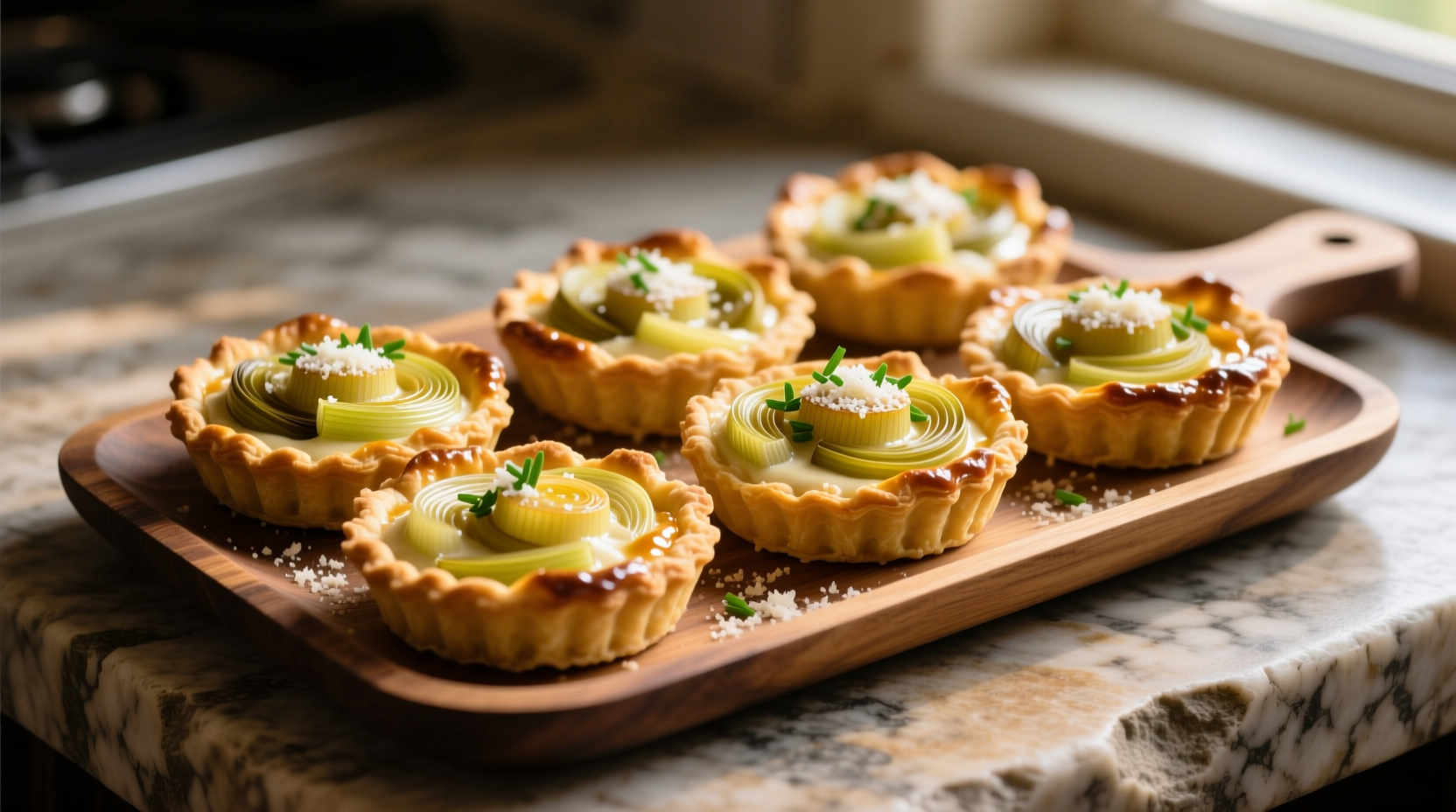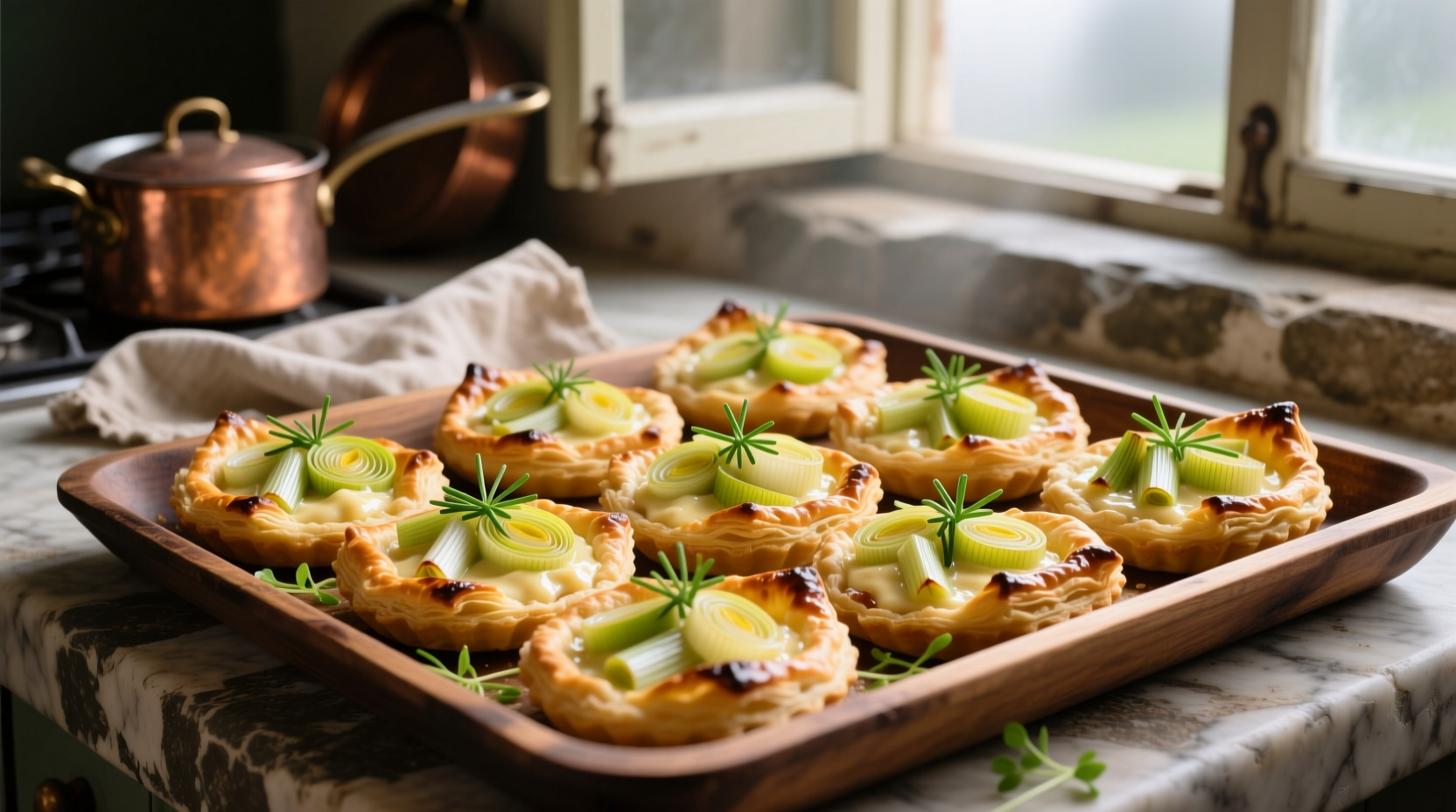Discover why leek tartlets have become a staple in sophisticated entertaining while remaining accessible for home cooks. These versatile bites showcase the natural sweetness of leeks transformed through careful preparation into a refined culinary delight that impresses without requiring professional kitchen skills.
The Essential Leek Tartlet Foundation
Leek tartlets trace their origins to French cuisine, where chefs transformed humble leeks into elegant hors d'oeuvres. Unlike their larger tart counterparts, tartlets offer perfectly portioned servings ideal for gatherings. The magic happens when properly cleaned leeks meet a balanced custard filling in a crisp pastry shell.
According to historical culinary records from the Encyclopædia Britannica, leeks have been cultivated for over 4,000 years, with evidence of their use in ancient Egyptian, Greek, and Roman cuisines. Their journey from peasant food to refined ingredient mirrors the evolution of leek tartlets from simple country fare to sophisticated party food.
| Leek Variety | Flavor Profile | Best Tartlet Application |
|---|---|---|
| King Richard | Sweet, mild, tender | Ideal for classic tartlets |
| Lincoln | Robust, earthy | Winter variations with bacon |
| Jolant | Delicate, subtle | Elegant brunch presentations |
Selecting & Preparing the Perfect Leeks
Choosing quality leeks makes the difference between ordinary and exceptional tartlets. Look for firm, straight stalks with crisp white bases and vibrant green tops. Avoid leeks with yellowing or slimy spots. The sweetest leeks typically measure 1-1.5 inches in diameter at the white base.
Proper cleaning is non-negotiable for perfect leek tartlets. Leeks grow in sandy soil, trapping grit between layers. Our foolproof cleaning method: slice leeks according to your recipe, then submerge in a large bowl of cold water. Swirl vigorously to release trapped dirt, then lift leeks out (leaving sediment behind). Repeat if necessary. Never skip this step—gritty tartlets ruin an otherwise perfect dish.

Mastering the Pastry Component
While homemade pastry showcases skill, quality store-bought options work beautifully for leek tartlets. For best results, choose all-butter puff pastry which delivers superior flavor and flakiness compared to margarine-based alternatives. When using pre-made pastry, ensure it's fully thawed but still cold before handling.
Blind baking prevents soggy bottoms—the most common tartlet failure. Line tartlet molds with pastry, prick bottoms with a fork, then fill with pie weights or dried beans. Bake at 375°F (190°C) for 12-15 minutes until set but not browned. Remove weights and continue baking 3-5 minutes until golden. This critical step creates a moisture barrier between filling and pastry.
The Filling Formula: Balance & Flavor
The perfect leek tartlet filling balances creaminess with leek flavor. Our recommended ratio: 1 cup cleaned, sliced leeks (about 2 medium) to 2 large eggs plus 1/2 cup cream. Caramelize leeks slowly over medium-low heat with 1 tablespoon butter until tender and sweet (15-20 minutes), not browned.
Professional chefs add these flavor enhancers that transform basic tartlets:
- 1 small minced shallot cooked with leeks
- 1/4 teaspoon fresh thyme leaves
- Pinch of nutmeg
- 1/4 cup grated Gruyère cheese
According to food safety guidelines from the FDA Food Code, egg-based fillings must reach 160°F (71°C) internal temperature to ensure safety. Use an instant-read thermometer to verify doneness.
Baking Process: Timing & Temperature
Filling temperature matters as much as baking time. Always let caramelized leeks cool slightly before adding to egg mixture—adding hot leeks to eggs causes scrambling. Fill pre-baked shells three-quarters full to prevent overflow during baking.
Bake tartlets at 350°F (175°C) for 20-25 minutes until centers are set but still slightly jiggly. Overbaking creates rubbery texture. The perfect tartlet has a golden top with subtle movement in the center when gently shaken. Cool 5 minutes before removing from molds to maintain shape.
Serving & Presentation Tips
Leek tartlets shine when served warm but not hot. The ideal serving temperature allows flavors to express fully without overwhelming the palate. For elegant presentations, arrange on a platter with lemon wedges and fresh chives. A light dusting of paprika adds visual contrast against the golden filling.
Pair leek tartlets with:
- Light white wines like Sauvignon Blanc
- Simple green salads with vinaigrette
- Roasted tomato soup for winter gatherings
Variations & Adaptations
Customize leek tartlets for different occasions and dietary needs:
Gluten-Free Option: Use gluten-free tartlet shells or create free-form mini tarts on parchment-lined baking sheets. The filling remains unchanged.
Vegan Adaptation: Substitute eggs with silken tofu (1 cup blended) and use plant-based cream. Add 1 tablespoon nutritional yeast for cheesy flavor.
Protein Boost: Incorporate 2 tablespoons finely diced smoked salmon or cooked bacon into the filling for heartier tartlets.
For special occasions, try our seasonal variations: add roasted asparagus tips in spring, sun-dried tomatoes in summer, caramelized mushrooms in fall, or truffle oil in winter.











 浙公网安备
33010002000092号
浙公网安备
33010002000092号 浙B2-20120091-4
浙B2-20120091-4